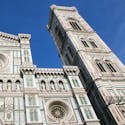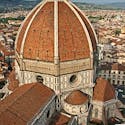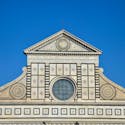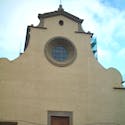More than a church, it is a collection of artists, politicians & popes
When you gaze upon the unfinished facade of the San Lorenzo church, it is hard to believe that this rustic looking building once stood as the cathedral of Florence.
It may be difficult to imagine with all the hustle and bustle of the nearby market, restaurants and stores, but when the church was consecrated it stood outside the city walls!
It claims to be the oldest in Florence and in fact, records show it was consecrated in 393 by Saint Ambrose of Milan, who was considered one of the most influential ecclesiastical figures of the 4th century.
The church is the home to many important “firsts” in the world of art and architecture, and a brief visit with our mini guide will help you see the major points of interest.
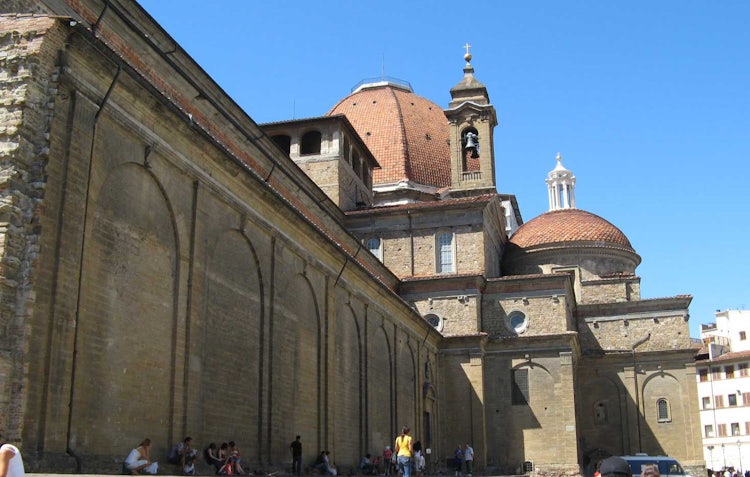
San Lorenzo is in the heart of Florence, close to the Duomo, SMN train station, restaurants and markets.
The church held the title of duomo for about 300 years, before the title was transferred to Santa Reparata, the present day Duomo. However, since it was the parish church for the Medici family it still maintained a high standing in the community, which can be seen by the prestigious works of art and architecture making up the building that you now see.
There is so much to see and explore at the church; we have divided the complex into five (5) sections, with a brief overview of what to look for as you explore this amazing piece of Florentine history.
1. Cloister
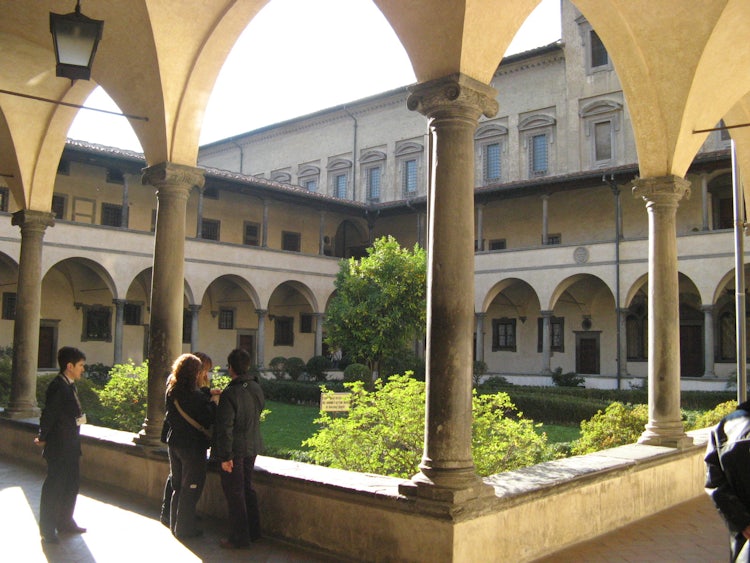
When you purchase your ticket, you enter into the “chiostro”, an enchanting green space that allows for glimpses of the Florentine skyline from within its sheltering walls. The fabulous green space in the complex is called the Cannon’s Cloister, and though the restructuring of the church was entrusted to Brunelleschi, the cloister was executed by his disciple Antonio Manetti Ciaccheri (who also finished Brunelleschi's design for Santo Spirto located Oltranro).
The design creates a harmonious two-storey loggia with a round-arch arcade set upon elegant Ionic columns on the ground floor and the architrave on the upper one (built 1457-1460).
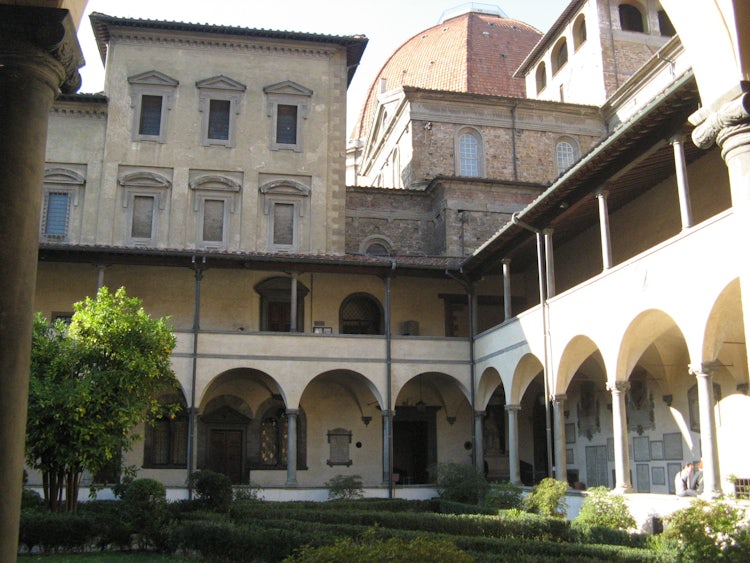
Originally the living area, kitchen and other offices would have looked out over the cloister. There is a second cloister which still preserves the original Brunelleschi imprint, but it is not open to the public.
The St. Lawrence Treasure & the Cellar
From the main cloister you will find the entrance to the museum, where you can admire a collection of the liturgical props and the basilica’s precious reliquaries.
Some may refer to this area as the crypt, but according to the curators on site it is more of a cellar - or an underground chamber. It is here that the artist Donatello has his final resting place, with a stone marker. Closeby is the tomb of Cosimo di Medici, his patron and friend.
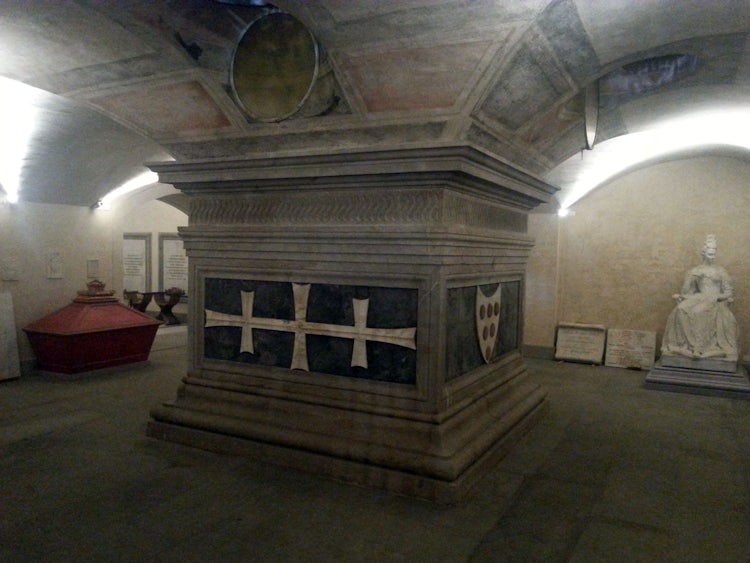
The chamber which houses the psalm of the great Medici leader is behind a wrought iron gate where you will see a marble sarcophagus and a huge pillar. With distinct symbolism, Cosimo was buried within the column - signifying his role as a “pillar” of the family and the church. The pillar pushes up on an area that corresponds directly with the altar in the church above. When you walk through the church, you will see a inlaid marble floor glorifying the head of the Medici family.
2. The Medicea Laurenziana Library
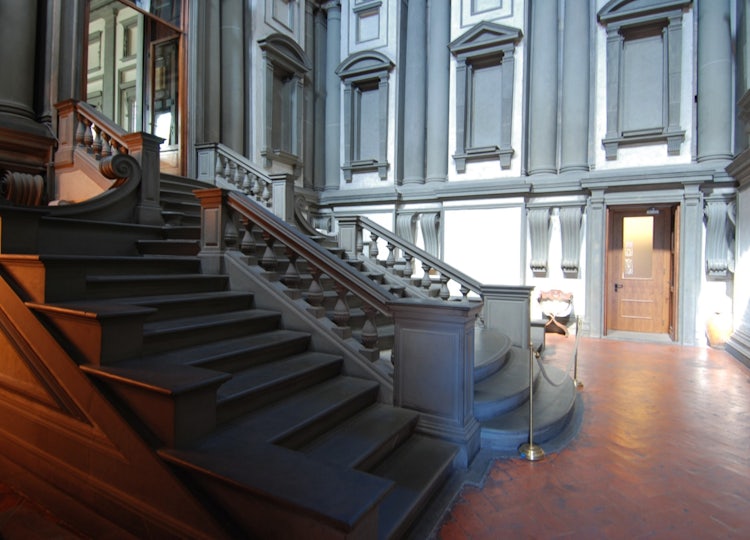
It is not always possible to visit the Library, however it is open to the general public when an exhibit is on display (there is an extra 3 Euro fee to visit the library and of course, the special event or exhibit). The Biblioteca Laurenziana is an extraordinary example of Mannerist architecture by Michelangelo. Approached by a curvaceous staircase in pietra serena it enters into a naturally luminous room.
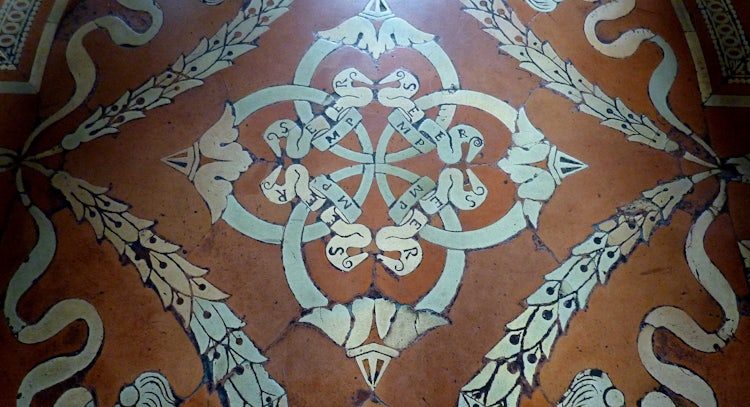
The long room features two aisles with rows of desks and benches (also known as plutei, reminiscent of a wooden structure used by the Romans for protection). They are an original Michelangelo design! The benches served a double purpose: space to sit and study as well as home to the core collection of over 3,000 manuscripts gathered by the Medici family. The benches, acting as a storage area, had panels on the end of each row detailing the contents within.
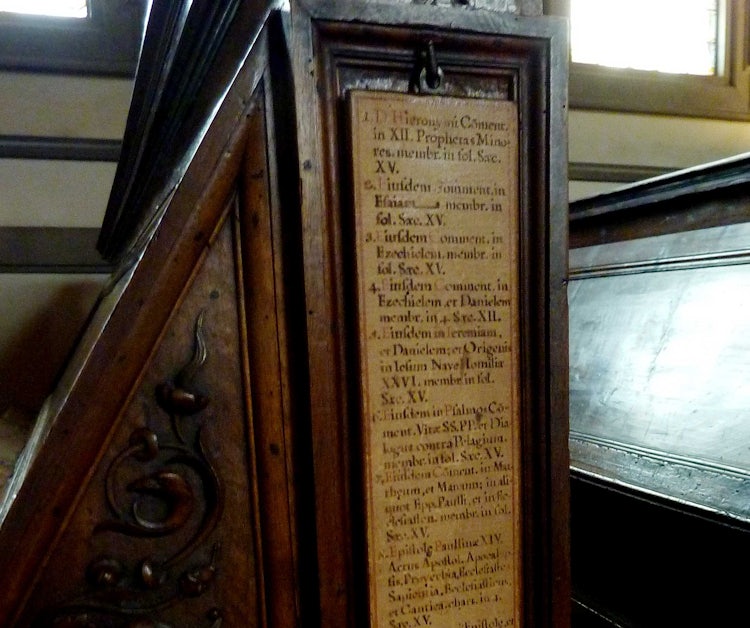
It is curious, Cosimo and Lorenzo Medici both contributed much to the library collection, perhaps to establish that they were so much more than men of commerce —their goal was to show themselves as men of scholarly pursuits, which was seen as a much higher calling than (just) making money.
3. Main Body of the Church
In order to enter the church, you must buy your ticket in the cloister next door. It is possible to go back and forth between the cloister and church - visiting them in whichever order you prefer.
The San Lorenzo church that you see before you today was rebuilt by Filippo Brunelleschi in 1419, his first project in Florence. It features a rough-hewn exterior which was supposed to be covered by a spectacular façade by Michelangelo, but due to lack of funds and other complications, the decorative covering was never added. If you are curious as to what it might have looked like if it were completed, a model of the exterior can be seen in Casa Buonarroti.
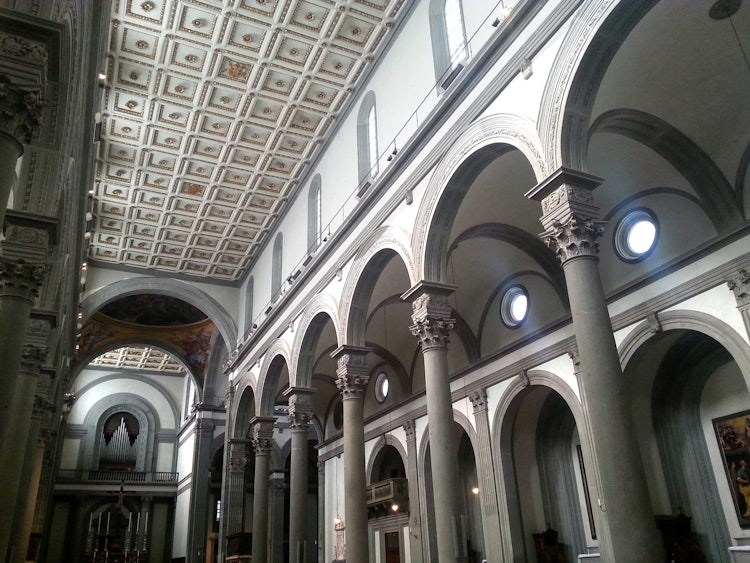
If you have already visited a few churches in Florence, you will notice a stark difference as soon as you walk inside.
But what are you actually looking at? Proportioned spaces and a return to the classics. The simple lines of the aisles converge to create an appealing space with light and a sensation of spaciousness. Instead of the pillar supports used in earlier architecture, there is a return to gray stone columns with beautiful capitals, with arches stretching from column to column reach towards the ceiling. The white coffered ceiling and simple lines are all part of the design.
In the main aisle of the church you will find a resident art-historian who speaks Italian & English and is prepared to answer any of your questions regarding the church, The Medici Family & the artists that worked here in Florence.
Brunelleschi's design, with grey pietra serena columns, gives a cool, airy quality to the interior. The bronze pulpits (circa 1460) are Donatello's last work and depict the Resurrection and scenes from the life of Christ; from these pulpits, Savonarola used to preach his hellfire-and-brimstone sermons.
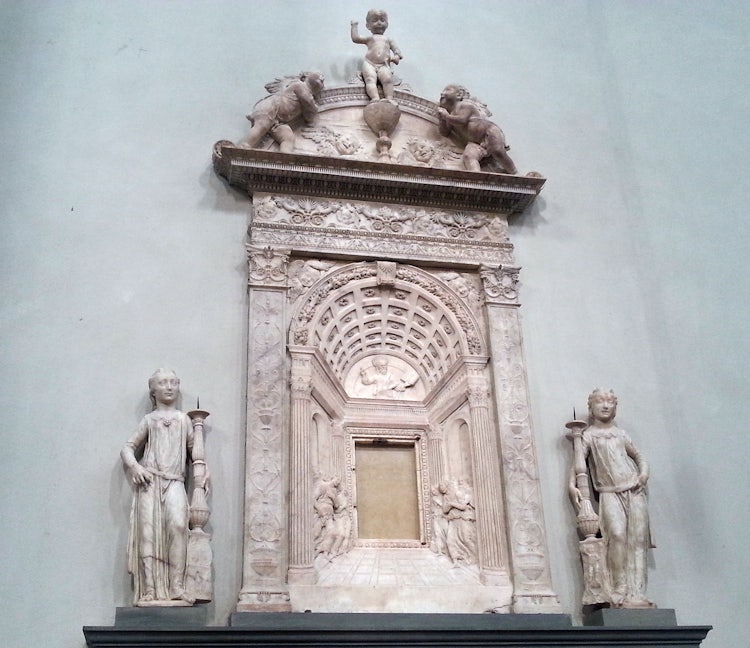
Of great artistic value is the fresco by Bronzino depicting the Martyrdom of St. Lawrence (1569) is a Mannerist study of the human body.
4. Old Sacristy
The Old Sacristy, is considered to be “the first accomplished cultural and artistic message of the early Renaissance” — which alone is enough to rank the church on the list of must-sees! The space came to be called the “Old Sacristy” after a new one was begun in 1510 on the other side of S. Lorenzo’s transept (Nuova Sagrestia - anchor). As you walk up the main aisle (nave) it will be on the left hand side, and it is said that “it set the tone for the development of a new style of architecture that was built around proportion, the unity of elements, and the use of the classical orders.”

Another great artist whose contribution was immense towards the completion of the Old Sacristy, as well as many other pieces in the main nave, was Donatello. It you follow an itinerary for Donatello and his many masterpieces spread throughout Florence, you have to make San Lorenzo one of your main stops! Especially here, he worked between the years 1428 and 1443, creating polychrome stuccos which unfold within the Brunelleschi’s design. Inside Brunelleschi's geometrically precise Old Sacristy, there are eight tondi (circular reliefs) by Donatello depicting the Evangelists and scenes from the life of St. John.
One of the more enchanting aspects of the transept is the small planetarium painted on the inside of the dome, some have suggested that it reproduces the actual placement of this celestial satellites above Florence in July 1442. The dark blue background is the stage for an arrangement of the moon, planets and stars accurately portraying the night sky.
5. Medici Chapels
San Lorenzo is the burial place of the Medici family, in what are called the Medici Chapels which you enter into through the back of the church.
The project of building a proper family mausoleum was conceived in 1520, when Cardinal Giulio de Medici, the future Pope Clemens VII, wished to build a place to house and glorify his ancestors.
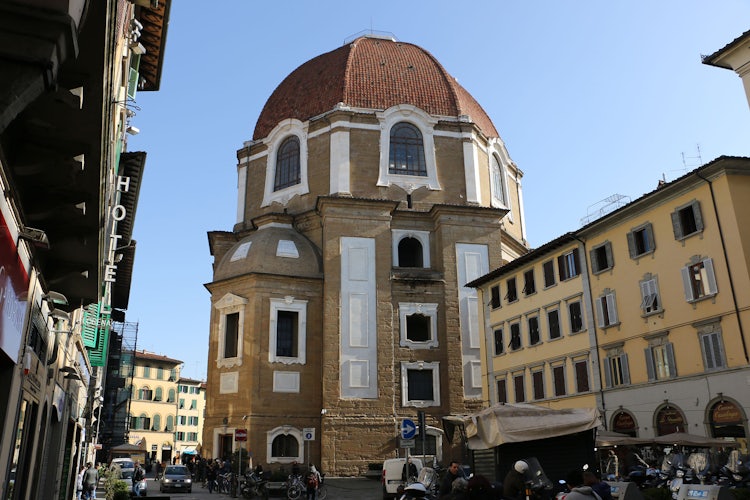
Enter through the back of the San Lorenzo Church, the chapels are divided into three distinct parts: the crypt, the Cappella dei Principi (Chapel of the Princes) and the New Sacristy. Read here for more information about the contents of the chapels.
New Sacristy
a mausoleum or mortuary chapel for members of the Medici family
Of all the places in Florence associated with Michelangelo, this is perhaps the most intriguing: here you will find his sculptures for the tombs of Lorenzo and Giuliano Medici (in the New Sacristy).
Chapel of Princes
marvelous inlaid marble designs
The walls are covered in a stunning arrangement of colored marbles and semi-precious stone. The intense craftsmanship required to execute a commission of this size pushed the Grand Ducal to establish the hardstone workshop, the Opificio delle Pietre Dure. The art of commessi, as it was called in Florence, consists of assembled fragments of stones to form intricate designs.

